Cobh is a small Cork town with a Titanic-ally spooky history, says ANN MASSEY
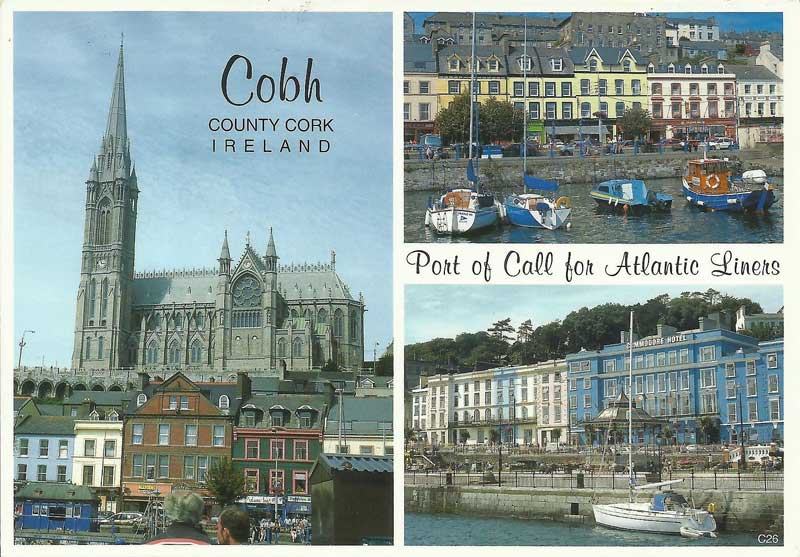
In a week that marks the anniversary of the maiden voyage and sinking of RMS Titanic, there is a place on the Southern Shore of the Great Island in County Cork which plays a big a part in this historic tragedy as any – the town of Cobh, formerly known as Queenstown.
Cobh (pronounced Cove) was the very last port of call for the Titanic, so it is no wonder that accounts of hauntings and strange occurrences abound, however with the rich military and nautical heritage it has, the Titanic stories are just the tip of the supernatural iceberg for this scenic Victorian town.
Originally the assembly point for the Napoleonic fleets, Cobh nestles in the shadow of the majestic St. Colman’s Cathedral, which is said to have a phantom Black Hound guarding its foundations.
Cobh looks out over Cork Harbour, Haulbowline and Spike Island, into the Atlantic Ocean.
It was named Queenstown in 1850 after a state visit from Queen Victoria and Prince Albert and reverted back to Cobh in 1920.
With such a history and so many paranormal occurrences, it seems only right to take a closer look at some of the events, sights and claims taking place over the past hundred or so years.
RMS Titanic
On Thursday, 11 April 1912, the RMS Titanic loomed over the Port of Queenstown, where it had docked to board more travellers and the mail.
123 Irish passengers boarded boats on the wooden pier that remains to this day and were rowed out to the colossal ship, dreams of a new life in America eclipsed by the excitement of the vastness of the Ocean Liner waiting for them.
Cheered on by the townspeople on the promenade and pier, Titanic raised anchor for the final time and at 1.30pm headed west for New York, no idea of the horror that was to befall her and her 2228 crew and passengers just four days later, never to see land again.
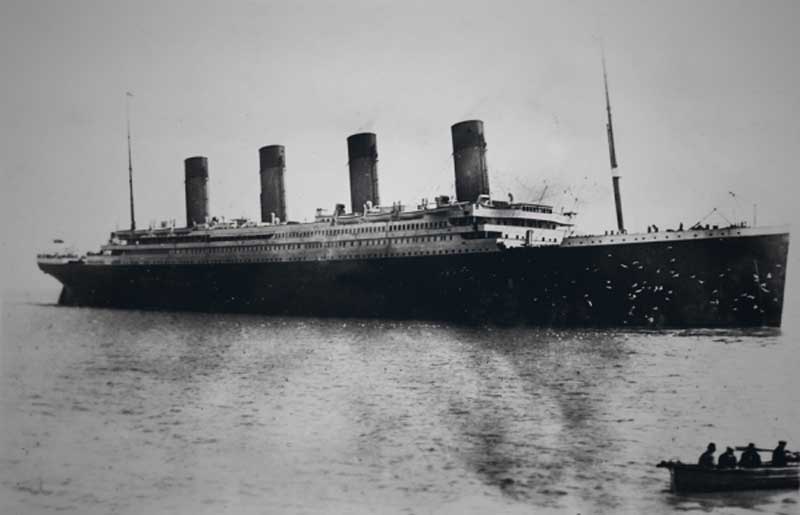
Of the passengers who boarded in Queenstown, only 44 survived.
To be by that wooden pier, where those travellers stood, knowing it was the last time 79 of them would ever stand on dry land is eerie even on the brightest day.
A shiver runs down your spine as you imagine the excitement of the emigrants turning to fear and terror in the freezing dark waters of the Atlantic.
In the heritage centre, built onto the Victorian railway line which would have brought many of the passengers into Cobh, poltergeist activity has been rife, with workmen’s’ tools being scattered and a crystal in the main Heritage shop being taken from a shelf in the night and placed carefully in the centre of the shop floor.
On the pier behind the heritage centre the spirit of a young woman in a red cape has been seen floating through the gates, looking expectantly out to sea.
RMS Lusitania
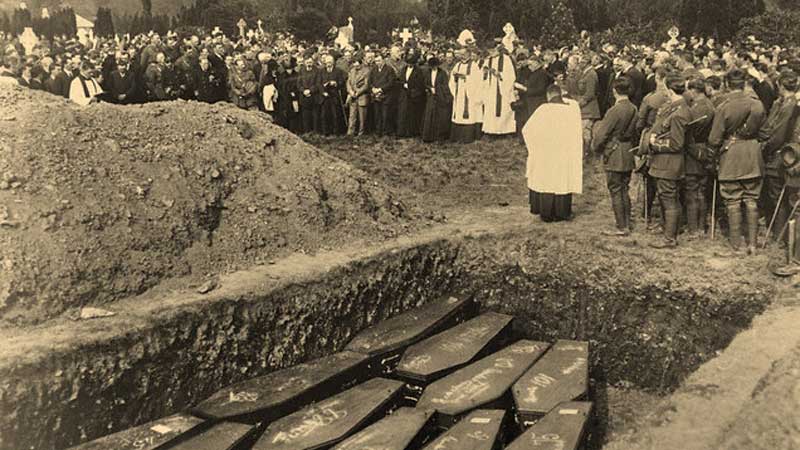
The Lusitania was a luxury vessel and very much a target for German forces during the First World War.
So much so, that the German embassy placed warnings in 50 American Newspapers advising passengers not to travel. Regardless of this 1959 crew and passengers boarded the ship and on 1 May 1915 it left New York bound for Liverpool.
On 7 May the Ocean Liner Lusitania was torpedoed by a German U-Boat just 11 miles off of the southern coast of Ireland, the first shot was a direct hit and was followed immediately by an internal explosion.
The Lusitania sank in less than twenty minutes and only a handful of lifeboats were launched.
Some 1,198 souls were lost and many of the bodies were either brought to or washed up in Queenstown along with the few survivors.
In the Old Church Cemetery just on the outskirts of Cobh, almost 200 of the victims of the tragedy are buried in mass and individual graves.
Witnessed on more than one occasion from a diverse section of the community including the White Witch of Cobh and a Graves Inspector is the chilling sound of a mass funeral procession for the victims of the Lusitania.
The White Witch herself claims to have ‘seen’ it, however, most accounts refer to many low murmuring voices and the sound of footsteps approaching the cemetery wall.
Some have in fact assumed a funeral was approaching and have looked up to see nothing but an empty road.
Read this wtiness account of the RMS Lusitania’s ghostly funeral procession in Cobh
Pillar’s Bar
Formerly a 19th century bank and once the most haunted working pub in Cobh, the imposing Pillar’s Bar stands empty.
If, however you have six figures in your bank account, the place is yours complete with sitting tenants in the form of poltergeists.
Customers and employees alike have been terrorised by an ominous presence and the sound of doors banging. Footsteps would be heard along with the sound of dragging furniture and mirrors would crack on their own.
Commodore Hotel
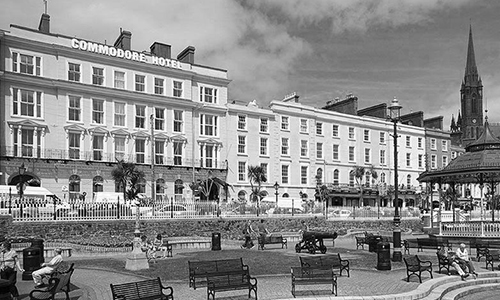
Ireland’s first custom built hotel opened for business in 1854 and its focus was to attract the many passengers embarking on voyages including the Titanic.
At the time of the sinking of the Lusitania by a German U Boat, the hotel was under German ownership.
Otto Humbert and his family were forced to hide in the cellars as a crowd gathered and demanded the hotel be burned to the ground. Instead the hotel was converted into a hospital and makeshift morgue for the hundreds of victims.
While locals feel there must be some residual energy left from the fear and torment of the poor passengers, the haunting most reported is that of a crying baby on the upper floors of the hotel, where the body of an infant was alleged to have been found abandoned in one of the rooms.
Spike Island
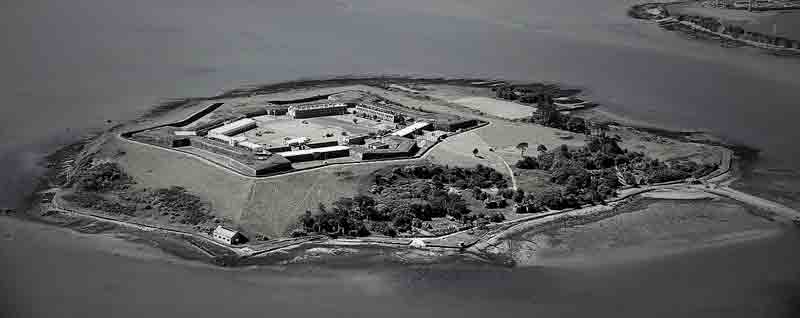
Spike Island lies just off of the coast of Cobh and is reached by ferry, with more than 100 acres and spanning a history going back to the 7th century.
Originally a monastic community, it’s location on the edge of Cork Harbour meant it was of strategic significance for everyone from smugglers to French, British and Irish Military.
In 1779 Spike Island became a fort for British Forces, with casements built so that guns were facing into the Harbour.
As time progressed, the fort became a prison and convict holding site for those unfortunates being shipped out to penal colonies.
During the Irish War of Independence IRA prisoners were held until 1921 and it became known as Ireland’s Alcatraz.
The Island was maintained as both a jail and military base until the latter 20th century when it became a Youth Correctional Facility.
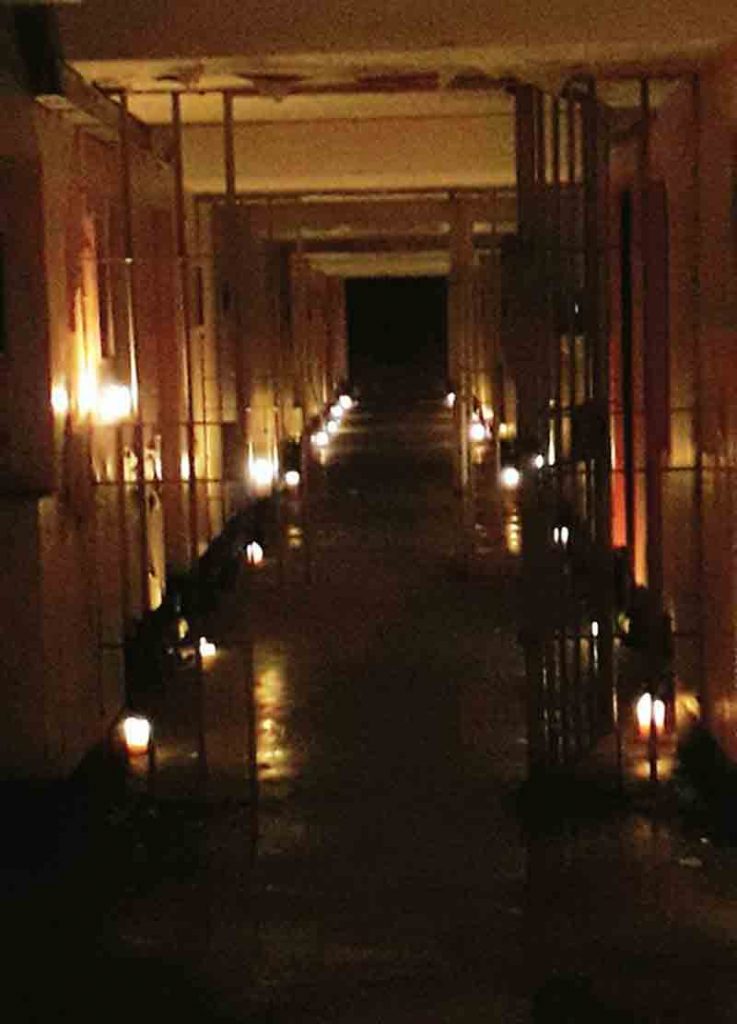
After a riot that lead to the remaining island civilians, Gardaí and prison officers being virtual prisoners themselves, the facility was wound down.
Spike Island is now a tourist attraction much the same as Alcatraz and is not without its own ghosts.
A Spectre known as the White Woman haunts the island and the perimeter walls are guarded by a phantom soldier staring through black hollows where his eyes once were.
If tragedy and despair are triggers for hauntings, then I cannot think of a more obvious place to find them.
To the naked eye, Cobh appears to have been lost in time, as Victorian now as it ever was, brightly coloured houses, original hotel façade, promenade and bandstand.
This port town however has not been lost in time, continuing to be a port of call for the world’s largest cruise ships.
Passengers embark and they all sail off into the Atlantic Ocean – well almost all. History has shown us that some never leave…
Have you seen a ghost in Cobh? Tell us about it in the comments section below!


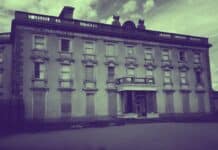
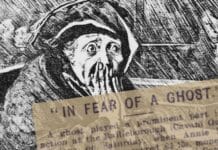
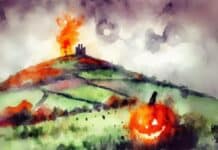

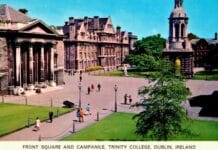
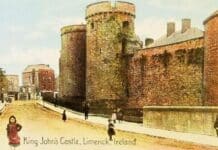


I loved Cobh!
Fascinating article!
I left a comment a few years ago about my ‘spooky’ experience at Cobh. Somehow, without looking for it, my experience at Cobh keeps coming back to ‘haunt’ me.
At the time I was an Irish civil servant, and one of the duties on my desk was the Irish State’s care for British Commonwealth war graves. There are many of these from Cruit Island in Donegal in the far north to Cobh in the far south. As it happened, I was due to check out the southern part of Ireland before an inspection from the CWGC in England, to make sure that all was in order and the graves of the victims of war were being properly maintained. (Yes. The ROI accepts responsibility for this, and properly so.)
Up the hill from St. Colman’s cathedral, on the left hand side at the summit, there is a wall on the left, as one climbs from the harbour. Behind that wall is a cemetery. It was there that I parked the car to begin my inspection. Down a laneway to the left was the entrance to the Old Cemetery. I walked down the lane and in through the cemetery gate. Once in I checked all was well insofar as my duties were concerned. As was my wont on such visits I checked the general area, and there I found Jack Dempsy’s grave with boxing gloves carved out in the marble stone. I also saw the mass grave where the bodies from the equally ill-fated Lusitania were buried. It was a sobering moment to realise that the two most iconic liners of the 20th century, the Titanic as well, of course, were connected to Cobh in such a tragic manner.
To complete my duty, I climbed onto the lowish wall beside the entry gate and took a series of photos that would later make a panoramic shot of the place for the official file. As I was completing this task I heard the approaching murmur of what to me, perched on the wall and with my back to the approach from the road, sounded like a funeral arriving. I hastily finished my task and descended from the wall with my back to the approaching cortege. But once down at road level I respectfully turned to acknowledge with respects mourners coming down the lane. But to my astonishment, when I turned around, there was no funeral, no people to be seen. I was quite alone at the cemetery gate.
My experience happened a long time ago. Being in my 80s now I am now I still am fascinated by the unlikely connection of two great liners which sank with great loss of life to the town of Cobh. Needless to say, I never mentioned anything of it once back in the office;.